Mystery Of Ancient Metal Clamps – Advanced Lost Technology Modern Science Still Cannot Explain
Ellen Lloyd - AncientPages.com - Ancient metal clamps discovered on megaliths, temples, and other prehistoric monuments worldwide are one of the greatest unsolved ancient mysteries of all time.
Why would the builders use or need a small metal clamp to hold large stone blocks in place?
How did this technology spread to ancient Egypt, Pre-Columbian Peru, and Cambodia thousands of years ago?
These countries are separated by thousands of miles. Who taught our ancestors how to use this technology?
The use of metal clamps in T-Grooves has been discovered in Tiahuanaco, Ollantaytambo, Koricancha, and the site of Yuroc Rumi, Vilcabamba. These clamps were also used on the Parthenon, on buildings in Mesopotamia, Egypt, and Cambodia.

Some scientists have suggested the clamps were for ceremonial use. Other researchers point out that ancient metal clamps served for keeping the blocks together, so they would harden out in the right position.
Several imprints show that metal clamps intended to join huge blocks of stone that our modern machines cannot lift.

Credit: MessageToEagle.com
Unfortunately, very few of the clamps have survived. The Spanish removed many clamps, thinking they might be gold. Some may indeed have been decorated with silver and gold, because it's well-documented that armies set about demolishing these structures, just for the clamps.
The clamps from Pre-Columbian South America that have been examined show them to be made of a very unusual alloy - 2.05% arsenic, 95.15% copper, 0.26% iron, 0.84% silicon and 1.70% nickel.

This composition is particularly interesting because there is no source nickel anywhere in Bolivia. At first, archaeologists believed that clamps were brought to these grooves to be placed, but recent scans have revealed that metal was poured into these indentations, which means the builders had portable smelters.

The metals used could only be melted at very high temperatures; temperatures the ancients (to our knowledge) were not capable of. The rare alloy of nickel-bronze-arsenic requires extremely high temperatures.
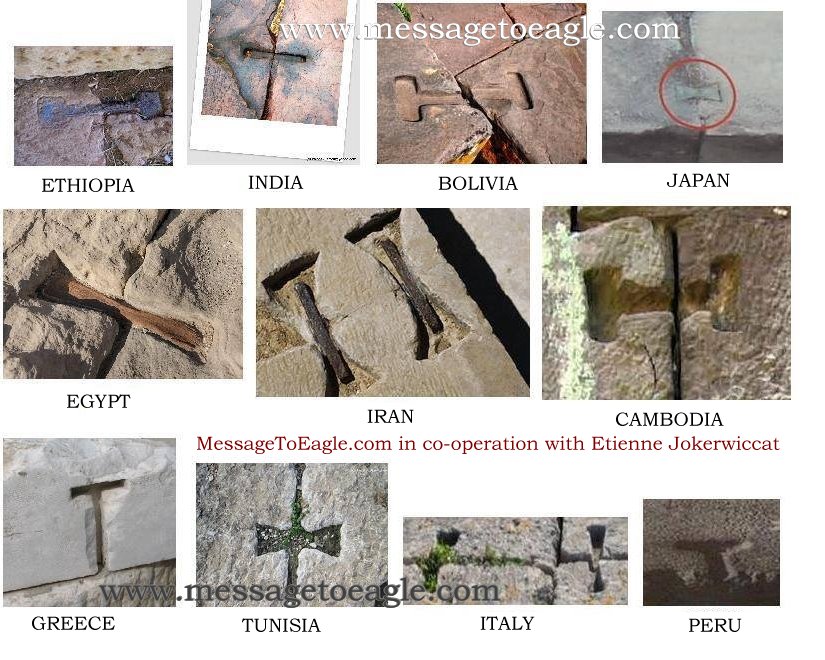
The Puma Punka brackets holes, when analyzed, showed platinum, a metal that only melts at 1753 C and aluminum, which supposedly was not discovered and produced in quantity until the 19th century.

See also:
10 Remarkable Similarities Between Ancient Civilizations
Obviously our ancestors had access to very advanced technology that became lost in the immediate centuries afterward, a technology and means modern science still cannot explain.
NOTE: This article was originally published on MessageToEagle.com would like to express gratitude to Etienne Jokerwiccat for sharing excellent research and photos with us. On behalf of the entire site and all its readers - thank you, Etienne!
Written by Ellen Lloyd - AncientPages.com - MessageToEagle.com
Copyright © AncientPages.com. All rights reserved. This material may not be published, broadcast, rewritten or redistributed in whole or part without the express written permission of AncientPages.com
More From Ancient Pages
-
 Unique Heart-Shaped Jesuit Ring At Fort St. Joseph In Michigan
Archaeology | Sep 17, 2022
Unique Heart-Shaped Jesuit Ring At Fort St. Joseph In Michigan
Archaeology | Sep 17, 2022 -
 Shieldmaiden Hervör’s Dangerous Quest For The Cursed Tyrfing Sword
Featured Stories | Apr 20, 2023
Shieldmaiden Hervör’s Dangerous Quest For The Cursed Tyrfing Sword
Featured Stories | Apr 20, 2023 -
 Ancient Calendar Predicted The Coronavirus And Other Disasters In 2020 – History Researcher Says
News | Mar 24, 2020
Ancient Calendar Predicted The Coronavirus And Other Disasters In 2020 – History Researcher Says
News | Mar 24, 2020 -
 Number Nine: Sacred Symbol In Ancient Cultures
Ancient Symbols | Feb 14, 2017
Number Nine: Sacred Symbol In Ancient Cultures
Ancient Symbols | Feb 14, 2017 -
 Genetic Evidence Retrieved From 800,000-Year-Old Human Tooth
Human Beginnings | Apr 2, 2020
Genetic Evidence Retrieved From 800,000-Year-Old Human Tooth
Human Beginnings | Apr 2, 2020 -
 The Unicorn In The Bible Was An Oryx – Ancient Translation Mistake
Ancient History Facts | Apr 24, 2018
The Unicorn In The Bible Was An Oryx – Ancient Translation Mistake
Ancient History Facts | Apr 24, 2018 -
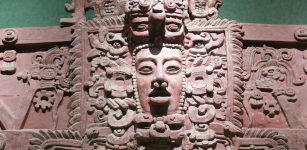 Fixing Archaeology’s Dating Problem – New Method Developed By Scientists
Archaeology | Sep 17, 2021
Fixing Archaeology’s Dating Problem – New Method Developed By Scientists
Archaeology | Sep 17, 2021 -
 Genetic Changes In Bronze Age Southern Iberia
Archaeology | Nov 18, 2021
Genetic Changes In Bronze Age Southern Iberia
Archaeology | Nov 18, 2021 -
 The Black Pyramid Of Amenemhat III – Mysterious Underground Chambers And Lost Ancient Treasures
Featured Stories | Aug 9, 2021
The Black Pyramid Of Amenemhat III – Mysterious Underground Chambers And Lost Ancient Treasures
Featured Stories | Aug 9, 2021 -
 6,000-Year-Old Earth Ovens Discovered In Washington State
Archaeology | Jun 21, 2023
6,000-Year-Old Earth Ovens Discovered In Washington State
Archaeology | Jun 21, 2023 -
 Vikings: Facts And History About The Tough Norse Seafaring People
Ancient History Facts | Mar 13, 2017
Vikings: Facts And History About The Tough Norse Seafaring People
Ancient History Facts | Mar 13, 2017 -
 Is This The Face of Queen Elizabeth I?
Archaeology | Oct 15, 2018
Is This The Face of Queen Elizabeth I?
Archaeology | Oct 15, 2018 -
 Famous Viking Sigurd Snake-In-The-Eye, Son Of Ragnar Lodbrok And The Mark Of Fafnir Prophecy
Featured Stories | Mar 16, 2018
Famous Viking Sigurd Snake-In-The-Eye, Son Of Ragnar Lodbrok And The Mark Of Fafnir Prophecy
Featured Stories | Mar 16, 2018 -
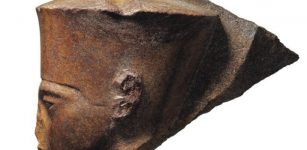 3,000-Year-Old Tutankhamun’s Head Sculpture Is Expected To Be Sold On Thursday In London
Archaeology | Jul 2, 2019
3,000-Year-Old Tutankhamun’s Head Sculpture Is Expected To Be Sold On Thursday In London
Archaeology | Jul 2, 2019 -
 LIDAR Reveals Secrets Of The Enormous Ancient Maya City Of Calakmul
Archaeology | Oct 31, 2022
LIDAR Reveals Secrets Of The Enormous Ancient Maya City Of Calakmul
Archaeology | Oct 31, 2022 -
 Perperikon, Tomb Of Orpheus And A Small Baffling Stone – Unraveling A Puzzling Connection That May Solve A Mythological Riddle
Ancient Mysteries | Feb 5, 2019
Perperikon, Tomb Of Orpheus And A Small Baffling Stone – Unraveling A Puzzling Connection That May Solve A Mythological Riddle
Ancient Mysteries | Feb 5, 2019 -
 Huge Viking Burial Discovered Beneath Streets Of Dublin
Archaeology | Aug 6, 2014
Huge Viking Burial Discovered Beneath Streets Of Dublin
Archaeology | Aug 6, 2014 -
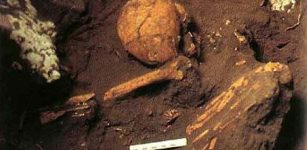 Curious 6,000-Year-Old Skull May Confirm Mythical Ancient Tribe Of Small Dark-Skinned People Did Exist!
Archaeology | Oct 11, 2022
Curious 6,000-Year-Old Skull May Confirm Mythical Ancient Tribe Of Small Dark-Skinned People Did Exist!
Archaeology | Oct 11, 2022 -
 Why Did Ancient Humans Have Same Sense Of Smell, But Different Sensitivities?
Archaeology | Jan 6, 2023
Why Did Ancient Humans Have Same Sense Of Smell, But Different Sensitivities?
Archaeology | Jan 6, 2023 -
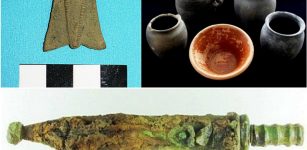 Rare Roman Brooch And A Miniature Sword – Unearthed
Artifacts | Jan 18, 2016
Rare Roman Brooch And A Miniature Sword – Unearthed
Artifacts | Jan 18, 2016
